Race fans enjoyed the sense of speed that a great game provided. They enjoyed the challenge of controlling a several-hundred horsepower car on a tough and winding course. Whether it was against a computer or human opponent there was a genuine sense of tension each time the green flag dropped. That energy was palpable even to non-race fans. The biggest reason why racing games exploded in popularity in the '90s was due to the introduction of 3D engines in the arcade. Casual fans would watch in awe as cars flew by some breathtaking scenery at over 200mph. Leading the pack was Sega. The company was no stranger to success. It had been at the forefront of arcade technology for decades. In fact Sega was an industry leader before the videogame as we know it had been born. In the early days the studio created electromechanical cabinets that featured moving components and no video screen whatsoever. Once the industry went digital Sega was ready to go. They had the talent, the production facilities and a network of arcades ready to distribute the machines.
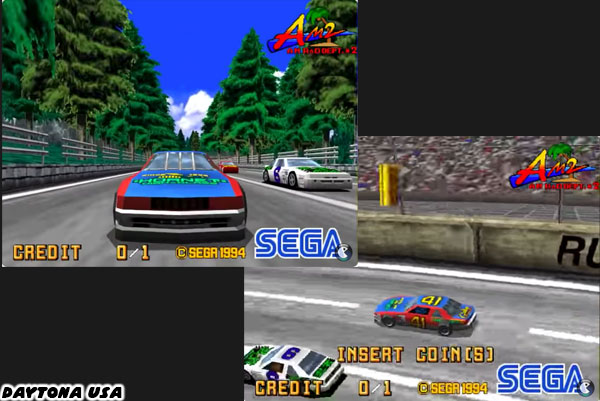
Daytona USA was the 3D racing series by which all other titles would be measured against. The game was based on the large and powerful Stock Car / NASCAR racers from the US. Early racing games tended to focus on the light and lean Formula-1 cars which were more popular in Europe. In a moment of inspired design or mad genius Yu Suzuki and his team at AM2 decided to put the stock cars on twisting F1-type courses. This guaranteed two things, lots of drifting and plenty of spectacular crashes. Stock cars by their nature were heavier than the F1 cars and tended to slide around turns. Even on extremely banked courses it could be difficult to keep a stock car from sliding around. The original Daytona USA played up the fact that the cars were difficult to control and rewarded players by allowing them to drift (slide) and "slingshot" past opponents so long as they were also drafting (using the lead car to block the wind). This type of racing was unrealistic and unconventional, yet it also made for a great gameplay mechanic.
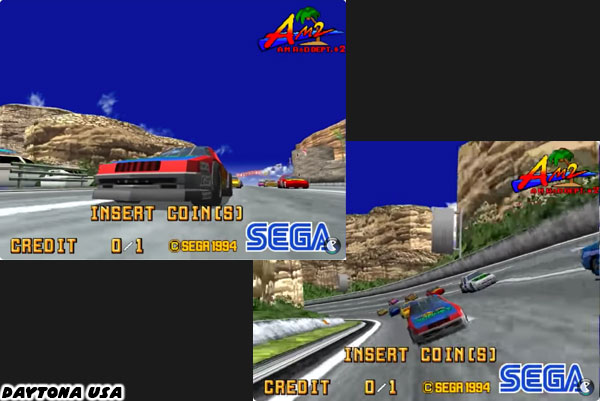
I had mentioned in an earlier blog that Daytona USA, released in 1994 actually featured less polygons than Virtua Racing from 1992. The addition of textures over the polygons created the illusion of greater details for the cars and environments. Daytona USA was the debut of Sega's proprietary Model-2 hardware, Virtua Racing and Virtua Fighter ran on Model-1 hardware. In 1998 the Model-3 hardware was ready to be unveiled and Sega used Daytona USA 2 as one the new platforms to highlight the new architecture. The hardware introduced a greatly improved rendering engine which featured new lighting, transparency and particle effects. The stages that racers drove through were jaw-dropping. Still photographs could never do justice to how amazing the circuits looked in motion. Even impossible to recreate in real life locations seemed perfectly plausible in the Daytona USA series.
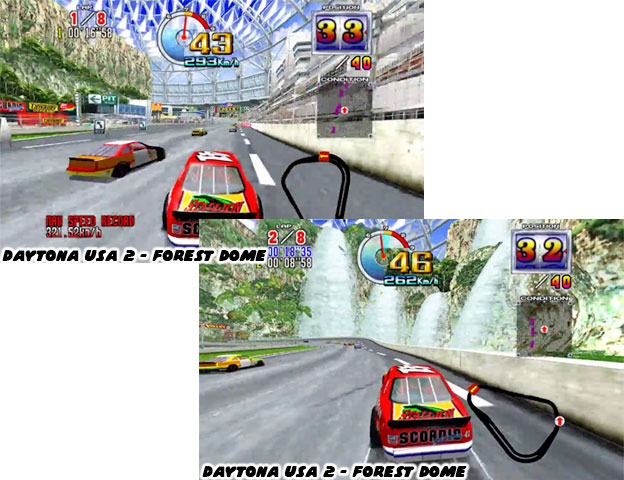
Only Suzuki and his team could have transformed a simple three turn track into a work of art. The Forest Dome was a beginner track featured in
Daytona USA 2 Battle on the Edge edition. It was inspired by a real world getaway destination inside the
Tropical Islands resort in Europe. Of course the Sega level took the idea one step further and featured a racetrack that was surrounded by a rainforest nature preserve with cascading waterfalls and grandstands all encapsulated by a gigantic crystal dome. Each track that Sega developed from that point forward was a work of art. The locations were so imaginative and wonderful that players often asked themselves why real world places couldn't be as cool. Game site editor Sam Kennedy once remarked that the Sega races all seemed to take place on the most utopian day ever. The skies were perpetually blue, there was no litter on the streets and all seemed right with the world.
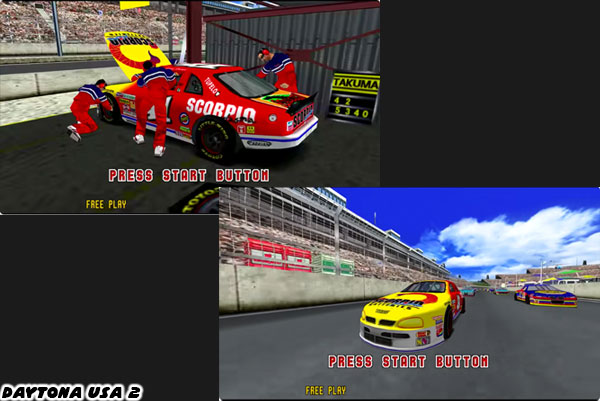
Something that most arcade visitors didn't realize was that the first Model-3 racing game was released a few years prior and had tracks which could be considered as good if not better than any track featured in the Daytona USA series. SCUD Race / Super-GT was released in 1996 and featured four real world super cars in an all-out battle for supremacy. SCUD stood for Super Car Ultimate Drive and the purpose of the game was to give arcade fans the sensation of going absurdly fast in million dollar super cars. Suzuki was an adamant Ferrari fan and made sure to include the F-40 in the lineup but to appease the rest of the racing community he included the Porsche 911, Dodge Viper and McLaren F1. These were all production cars that were capable of going over 180 MPH and in the case of the McLaren go over 200 MPH. No ordinary circuit would be good enough for these flashy rides. Sega had to invent tracks that were even flashier. Even the beginners track, like the Forest Dome, was gorgeous. The Dolphin Tunnel was a glass tunnel that connected a seaside city freeway. Racers would drive by miles of coral and pass all sorts of marine life on the way to the checkered flag.
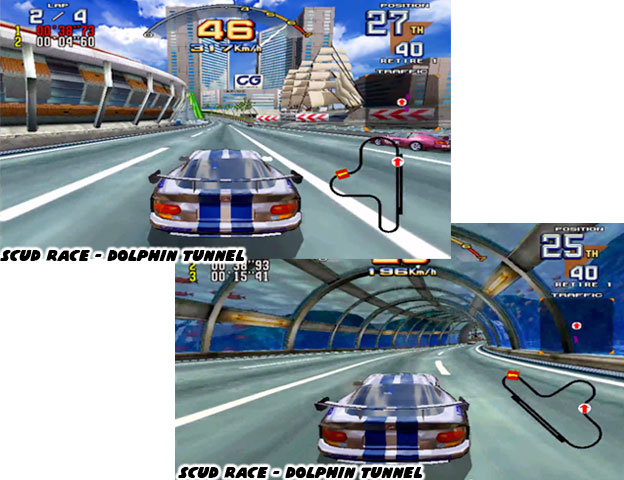
The track actually started above ground where cars would pass by a stadium and marina. Cruise ships and even tall mast sailing ships were waiting in the harbor. The circuit was framed by enormous skyscrapers which were polished to a mirror finish. Every element on the track was eye candy that made the experience of racing all the more enjoyable. Every time I raced on that track I was reminded of San Diego and my hometown of Long Beach. The two port towns were absolutely stunning on clear days. I often wished that one of the cities would build part of the freeway underwater or at least create a transparent seawall near the lowest part of the harbor. Of course feats of engineering like that could really only happen in a world where the national budget was focused on infrastructure rather than war. Despite all of the advances in graphics technology and the evolution of gameplay there were many fans that longed for racing games that were easier to get into and enjoy. A pair of retro-inspired games had been released recently which help appease fans of the golden era of racers. The next blog will look at these titles.
As always if you would like to sponsor me
please visit my Patreon page and consider donating each month, even as little as $1 would help make better blogs and even podcasts!










Now if sega would just bring scud race home now that the hardware can handle it no question.
ReplyDelete